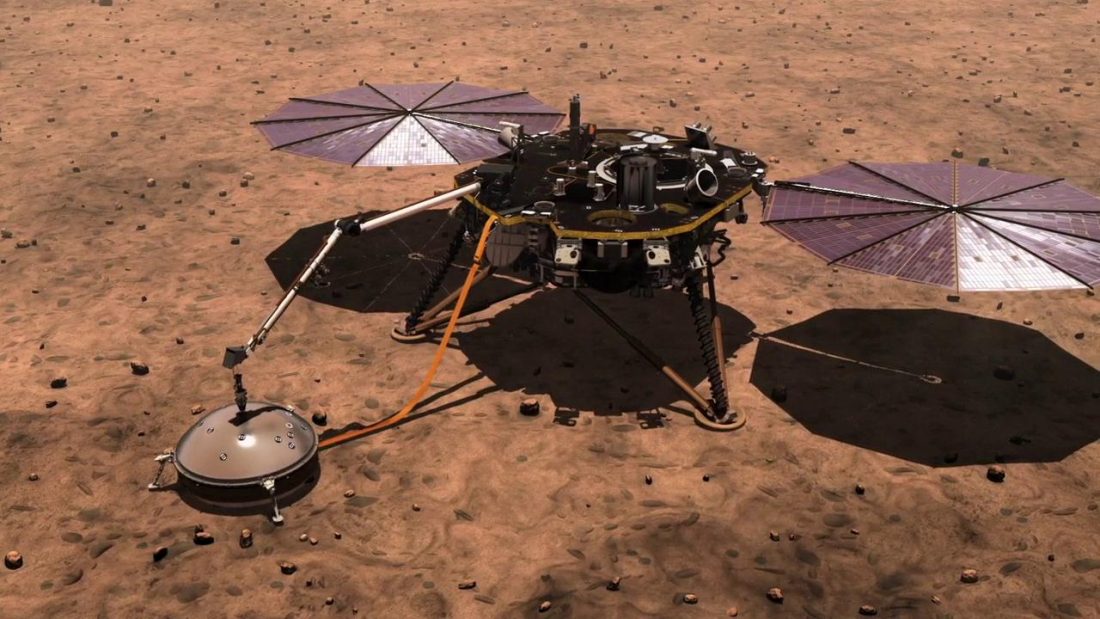
Besides the usual seismic data from Marsquakes, meteoroid strikes will be critical to refining Mars’ timeline
NASA has released the sound of a meteoroid striking Mars that was captured by Insight lander, a month after it released the sound of a Black Hole. Even the sound of Sun was also released by NASA in 2018, bringing space enthusiasts nearer to experience what’s happening out there.
The sound of the meteoroid striking Mars as recorded by InSight lander is like a “bloop” due to a peculiar atmospheric effect and the sound can be heard three times.
Read: Where’s water on Mars? Scientists surprised with new InSight data (August 11, 2022)
Apart from this sound of meteoroid impacting Mars in September 2021, the visuals of three craters created between 2020 and 2021, ranging between 53 and 180 miles (85 and 290 kilometers) at a region called Elysium Planitia are also captured by the Reconnaissance Orbiter’s High Resolution Imaging Science Experiment (HiRISE) camera.
Why do meteoroid strikes matter?
The first of the four confirmed meteoroids entered Mars’ atmosphere on Sep 5, 2021, exploding into at least three shards that each left a crater behind, said NASA.
But the question is why similar meteoroid strikes were not captured live before. It means a few meteoroid impacts on Mars, explain NASA scientists.
“The Red Planet is next to the solar system’s main asteroid belt, which provides an ample supply of space rocks to scar the planet’s surface. Because Mars’ atmosphere is just one percent as thick as Earth’s, more meteoroids pass through it without disintegrating,” NASA said.
InSight’s team also suspects that other impacts may have been obscured by noise from wind or by seasonal changes in the atmosphere. Besides the usual seismic data from Marsquakes, the impacts will be critical to refining Mars’ timeline.
“Impacts are the clocks of the solar system,” said the paper’s lead author, Raphael Garcia of Institut Supérieur de l’Aéronautique et de l’Espace in Toulouse, France. “We need to know the impact rate today to estimate the age of different surfaces.”
Scientists can estimate the age of a planet’s surface by counting its impact craters, the more they find, the older the surface is. Projecting it by statistical models, they can assess how many impacts happened earlier in the solar system’s history.
Read: Weird balancing rock: Mars never short of surprises (June 28, 2022)
Sound of Black Hole
A month ago, NASA had released the sound of a Black Hole at the center of the Perseus galaxy cluster that has been attributed to ripples in the cluster’s hot gas.
The actual sound waves were discovered in data from NASA’s Chandra X-ray Observatory. Translating the pressure waves, NASA reconstructed the sound using a new sonification method by translating astronomical data into sound.
The new sonification has put to rest the popular misconception that there is no sound in space as it is mostly vacuum, and no medium to propagate through.
NASA said a galaxy cluster has copious amounts of gas that envelop the hundreds or even thousands of galaxies within it, providing a medium for the sound waves to travel.
Prior to that NASA and European Space Agency scientists have released the sound of the Sun in 2018 that was captured from the dynamic movement of the Sun’s atmosphere for over 20 years.
The sounds of the Sun are on display at the NASA Goddard Visitor Center in Greenbelt, Maryland at an art installation called Solarium, where the scientists used vivid imagery and sonification to transport listeners to listen to the solar system.
Read: NASA’s InSight lander captured the ‘bloop’ sound of a meteor falling to Mars (September 20, 2022)
These solar sounds generated from 40 days of the Solar and Heliospheric Observatory’s (SOHO) Michelson Doppler Imager (MDI) data were used by Stanford Experimental Physics scientist A. Kosovichev using a special procedure of generation and removal of noise before making it audible for human ears.
“We can see huge rivers of solar material flowing around. We are finally starting to understand the layers of the Sun and the complexity,” said Alex Young, NASA heliophysicist at Goddard Space Flight Center in Greenbelt, Maryland. “That simple sound is giving us a probe inside of a star. I think that’s a pretty cool thing.”
However, unlike the sounds of Sun or Black Hole, this time NASA’s Insight was able to capture the Sound of Mars in realtime and there it has made a mark.



